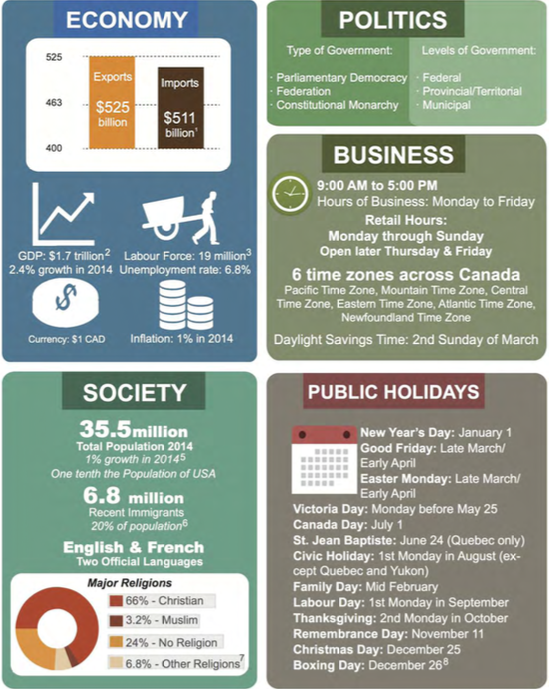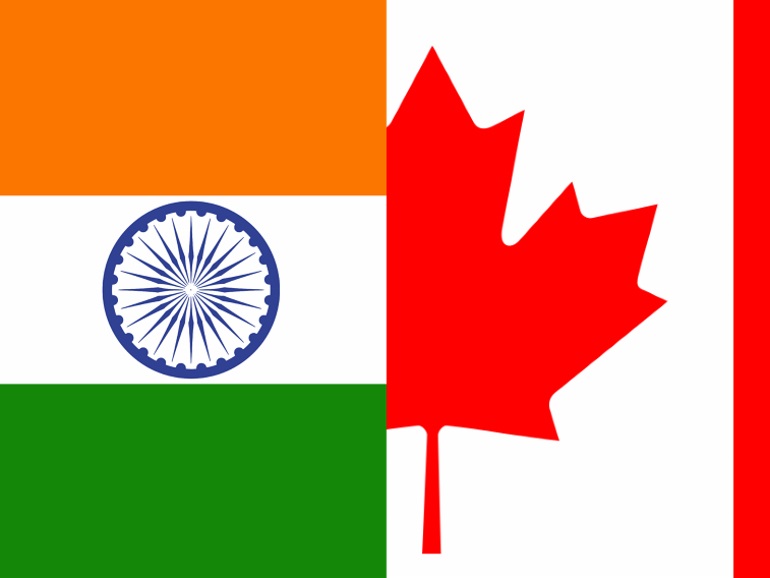Why Export to Canada?
1. An Import-Oriented Market
Canada depends heavily on imports to drive economic growth and meet consumer demand. Canadian imports reached a five-year high of $511 billion in 2014, making Canada the 13th largest import market in the world. Although Canada’s market is approximately 10% the size of the U.S. market, it actually imports almost twice as much as its southern neighbours on a per capita basis. Growth in Canadian imports has been strong and stable, averaging 5% annually over the past five years (2010–2014). This upward trend is expected to continue as demand grows for foreign products.
2. Diverse Consumer Tastes
Most of Canada’s population growth is a result of immigration. In fact, 1 in 5 Canadians were born outside the country, giving Canada the largest proportion of foreign-born citizens among G7 nations. The 6.8 million immigrants who call Canada home come from more than 200 countries, with 13 different ethnic groups having populations of more than 1 million. As these communities grow, so does their demand for familiar products from their country of origin. Canada’s multiculturalism also influences mainstream consumer tastes. Many products that once sold only to an ethnic niche market have now been widely adopted. This offers importers of new products substantially higher sales potential in Canada than in many other markets.
3. Preferential Market Access
The Canadian government is committed to diversifying trade opportunities and has signed trade agreements with many developing and emerging countries. Canada has trade agreements with 43 countries that together account for half of the global economy. Over the past five years, Canada has signed bilateral trade agreements with Colombia, Jordan, Panama, Honduras and Korea, and is now negotiating 11 others. Canada also offers duty-free and quota-free market access to the least-developed countries as well as lower-than-normal tariff rates to over 100 other developing countries, giving them a competitive edge.
4. Consumer Purchasing Power
Canada’s economy grew 2.4% in 2014 and inflation rates have remained below 3% for the past two decades. While there are signs that Canada is entering a recession, the economy remains stable and with a strong labour force. While Canada has a smaller number of luxury buyers than the U.S., the growth rate of top income-earners (more than $150,000 per year) is outpacing the U.S. rate. New concentrations of wealth, especially around Calgary’s oil boom, have attracted the attention of luxury retailers, with Nordstrom opening its first Canadian location in 2014.

Source: TFO






